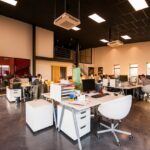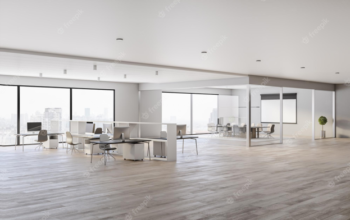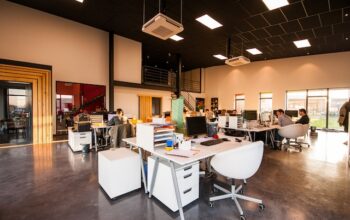The use of computers has fundamentally transformed how people perform different activities in the office. Without a doubt, technology has enhanced productivity and made it easier for people to complete their tasks.
The only downside is the unprecedented ergonomic challenges resulted from long hours of sitting. This daily routine can lead to high rate musculoskeletal disorders (MSD), which targets employee productivity.
With the right kind of furniture, employees can perform better and prevent MSDs. Aside from desks, a custom conference table with the right height can make collaborations productive and efficient.
What Is Ergonomics?
Ergonomics is the process of analyzing and arranging workplace products and systems for the benefit of the people who will use them. It can be furniture, interior design, space, and overall set up. The goal of this process is to eliminate the occurrence of injury and discomfort while also maintaining a safe work environment.
Experts in the field look into several aspects that can affect the productivity of employees, such as wrong postures adopted from sparse furniture, or lack of collaborative spaces for meetings and training.
How To Improve Workstation Ergonomics
Improving the workstation ergonomics is easy, as long as companies consider the needs of its employees, as well as the daily work routine involved. Listed below are some of the ways to improve ergonomics at work.
- Getting The Right Kind Of Furniture
Without a doubt, the best thing to do is to purchase the right kind of furniture for employees. Instead of purchasing fixed chairs, you can buy adjustable ones to encourage good posture and body position. Additionally, not all people are at the same height, and you need to consider that some of the employees will go and new ones will come. With this, employees can easily adjust the height of chairs depending on their preferences.
For collaborative spaces such as meeting rooms, a sturdy and custom conference table helps to fit more people in one area. Also, a good table enables employees to sit comfortably and interact more during the meeting with eye contact.
- Identify Ergonomic Challenges
Taking the time to observe the office environment helps identify the ergonomic challenges in the workstation. For instance, the location of printers, telephones, and other equipment matters as employees use these regularly. If the printer is positioned in a lower area, repeatedly curving the back can cause posture problems.
In the United States, work-related MSDs are increasing in number due to repetitive movements and actions. More than 79% of American workers aging 25 to 54 years, experience back pain, sprains, Carpal tunnel syndromes, and hernia. Given these medical issues, companies need to provide a better work environment to avoid the occurrence of such disorders.
- Call In Experts
It’s best to work with experts in ensuring the safety and health of employees. While some companies don’t usually hire ergonomics experts, think of this as an investment to avoid employees calling in sick leaves to get your back checked. Not only productivity decreases, but some employees can also sue companies for unsafe working conditions.
Taking the time to analyze the needs of your employees helps promote productivity and loyalty to the company. Nowadays, employees also consider the workstation environment when looking for career opportunities. To get the best talents, you must be willing to enhance your workspace.
Related Posts












